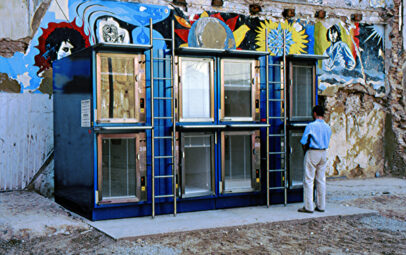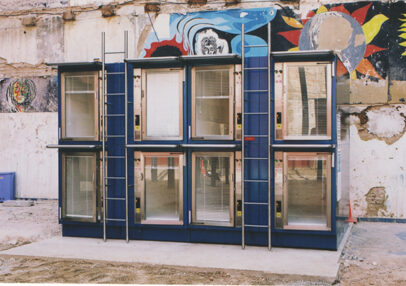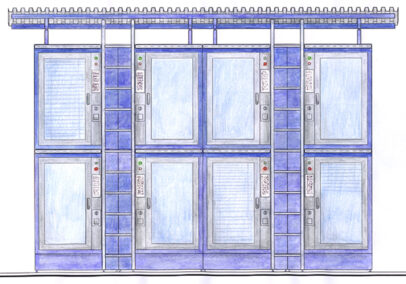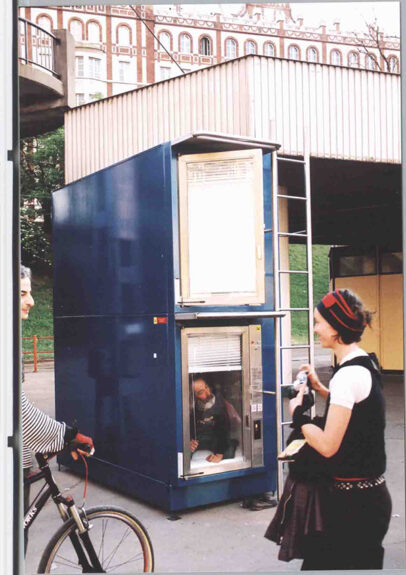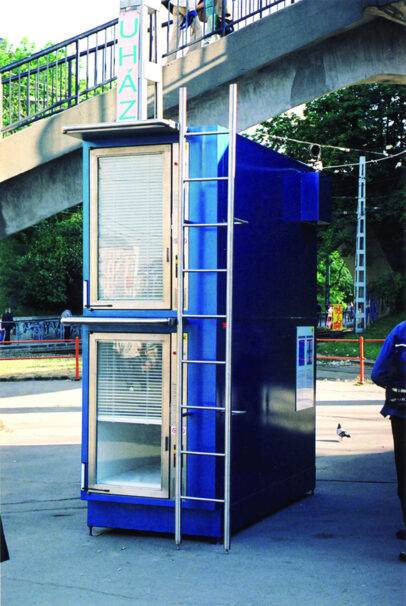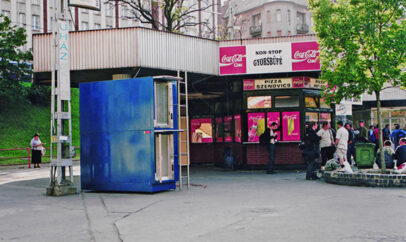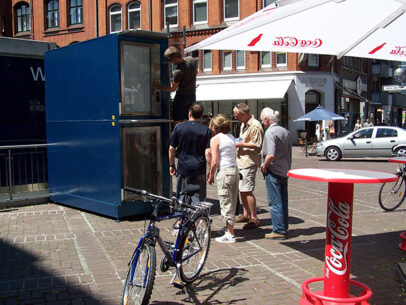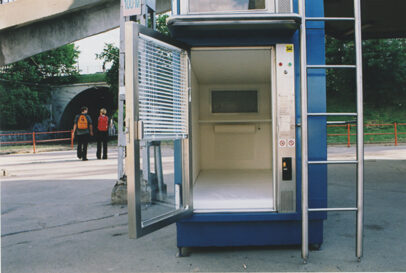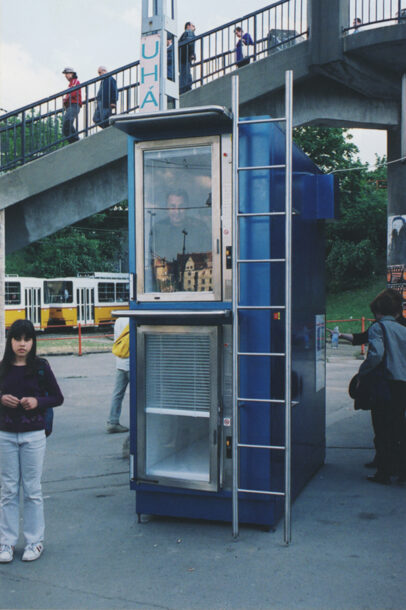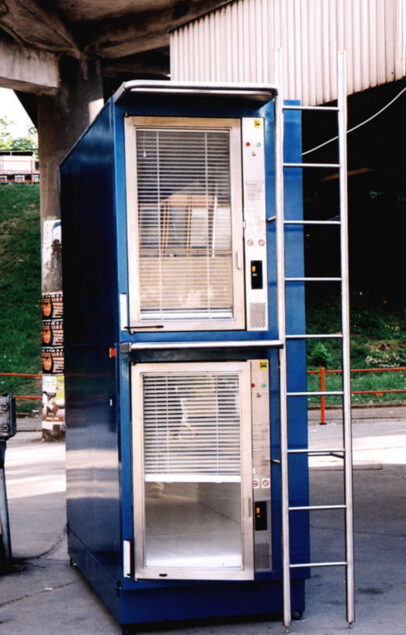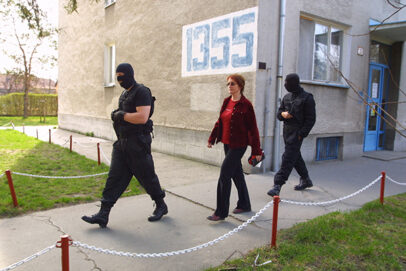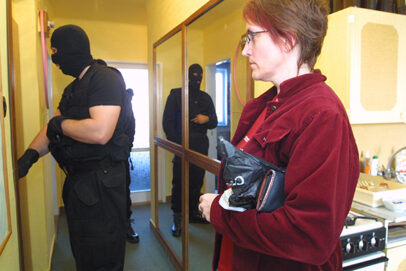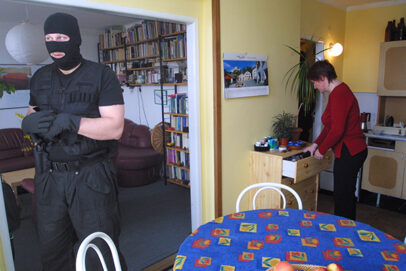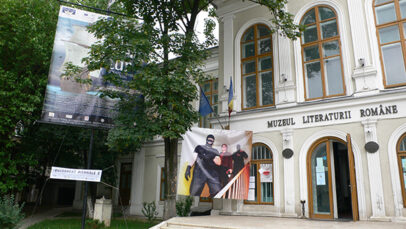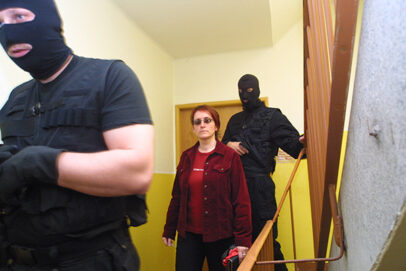Capsules I.
Capsules I., 2003
Object – machine in public space
320 x 480 x 240 cm
Iron, stainless steel, metal sheets, chipboard, upholstery, rubber, electronic
Architect: Marián Ravasz
Photos by Marián Ravasz
The Capsule is a minimal space where a person can relax or take shelter. It can provide accommodation for either homeless people or young people who just wish to spend a few hours there. It can also be the new, even more impersonal version of the Japanese capsule hotel. The capsule’s interior design is ergonomic, comfortable, but minimal. It functions similarly to left-luggage lockers at stations or public buildings. Its exterior design also recalls these lockers, although it is much bigger in size. The capsules can be built either one on top of the other or side-by-side; they can be put together like modules.
